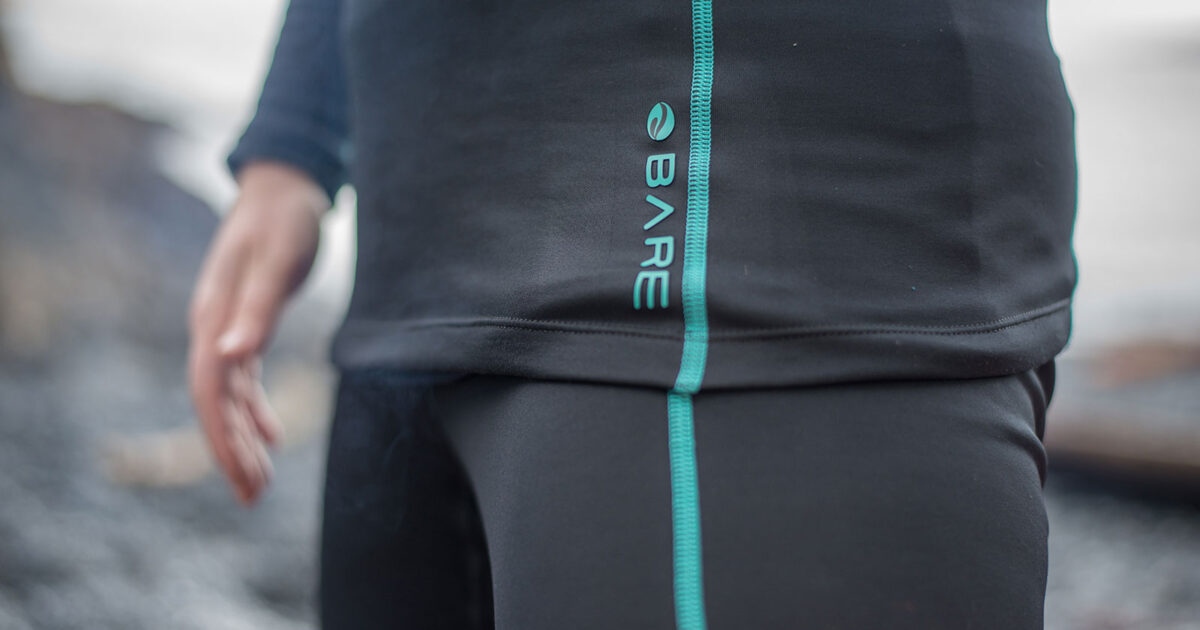Drysuits, by their very nature, are a miraculous thing. The ability to comfortably immerse oneself in an aquatic landscape for long periods of time opens up new horizons for diving as well as marine engineering.
But sometimes the protection of a drysuit on it own isn’t enough and additional thermal insulation is required. The hard part—keeping water off your skin—is taken care of, but as we like to say at BARE: A good dive starts from the inside out.
Technically speaking, drysuits provide either CVE or VVE protection, depending on whether it is made from trilaminate or neoprene material. Both require the addition of under layers to keep you warm, the decision becomes how many and how thick.
So what to wear? Is it better to layer as much as possible? or is there a threshold of diminishing returns with layering?
Many divers will use existing layers that weren’t designed for dive. For example, newcomers will commonly approach drysuit layering similar to how they might layer when skiing or snowboarding. In warmer water where the thermal demands aren’t as intense, normal polypro and fleece can work fine.
Although this may be a tempting option, BARE’s SB System layers are modular and designed specifically for diving. Activity-specific designs ensure the highest level of comfort and performance in every dive situation, especially in cold water.
Patterns for the SB System have been thoughtfully developed. Excessive bulk from stacking panels and zippers is limited to maximize comfort and performance in every diving environment. We have gone to great lengths to source and develop the highest performing fabrics to ensure the best moisture management and warmth.
Comprehensively, there are three levels of layering. Your application of these levels largely depends on water temperature, dive duration and personal preference.
BASE LAYERS
Your base layer is the first stage in moisture and thermal management. This is the most important layer in keeping a diver dry and comfortable. The Ultrawarmth Base Layer are made from an advanced stretch, breathable fabric that draws moisture away from the body creating a dry zone next-to-skin barrier.
MID LAYERS
The mid layer is the warm fleece layer. This fabric was designed for military use and when we created it with our partners at Polartec®, we knew this was the perfect application for dive. This is a one-of-a-kind compression resistant, double layer fleece. Don’t be surprised by the lack of bulk. In this case, more bulk definitely does not mean more warmth.
TAKEAWAYS
Generally speaking, staying dry and warm will increase how much you enjoy your time in the water. Although it helps to outfit yourself in dive-specific layering systems that are built specifically for your activity, wearing some thermal protection—even if not perfect—is better than going with no insulation at all.
Lastly, if you do opt to improvise a layering system beneath your drysuit, be sure to use synthetic layers like polypropylene, polyester, or some type of fleece. Avoid cotton at all costs—if it gets wet, it’ll sap your body heat until it either dries or is removed.











